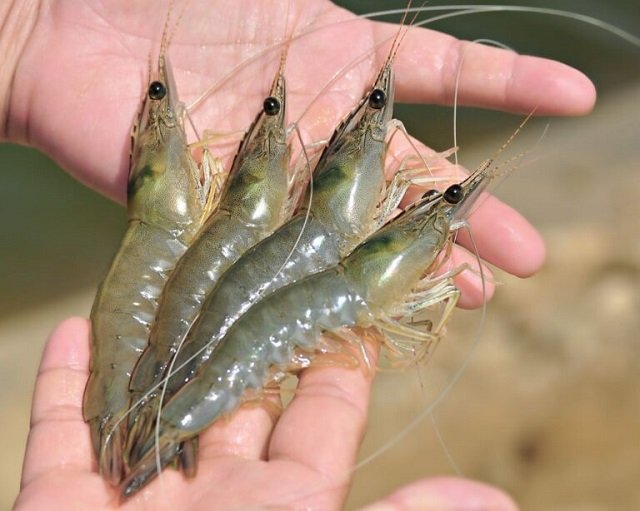
Shrimp aquaculture is a thriving industry, but reliable access to high-quality live feed for shrimp larvae can be a challenge, especially in inland areas.
Artemia, a small crustacean also known as brine shrimp, is a vital part of shrimp post-larvae rearing, particularly for larvae. However, traditional methods of Artemia collection from salt ponds can be unreliable and geographically limited.
Researchers at ICAR- Central Institute of Brackishwater Aquaculture studied how to optimize biomass cultivation techniques under different diet management regimes, salinity, and population density to derive the best cultivation model for Artemia production in tanks in discontinuous systems that can be established as part of Indian shrimp hatchery maturation units (Penaeus indicus).
This new and exciting research explores a turning point: controlled biosecure systems for Artemia production. This means producing high-quality Artemia anywhere, regardless of access to salt ponds!
Quality live feed for broodstock
Traditionally, wild polychaete worms have been the preferred choice for feeding shrimp broodstock due to their excellent nutritional profile. However, polychaetes face several challenges: unpredictable supply, potential diseases, overfishing, and seasonal variations in quality. This translates to high costs and inconsistency for shrimp producers.
Artemia offers a promising alternative. Artemia nauplii are already widely used to feed shrimp larvae, but adult Artemia can be equally nutritious. They feature a good balance of energy, essential amino acids, fatty acids, and proteins. Additionally, Artemia biomass production can be profitable and easily integrated into shrimp hatcheries.
The challenge in feeding broodstock
Large-scale Artemia production relies on extraction from natural salt ponds, limiting accessibility for many shrimp farms, especially those inland.
Here’s why Artemia is so promising:
Stay Always Informed
Join our communities to instantly receive the most important news, reports, and analysis from the aquaculture industry.
- Rich nutritional profile: Artemia offers a well-balanced diet containing essential amino acids, fatty acids, and proteins, making them highly nutritious for broodstock.
- Cost-effective: Compared to expensive polychaete worms, Artemia production can be cost-effective and beneficial for shrimp producers.
- Biosecurity option: Tank-based Artemia production allows better biosecurity control, reducing the risk of introducing diseases from wild-caught feed.
- Adaptable to inland locations: Unlike traditional methods relying on solar salt ponds, tank-based production makes Artemia cultivation possible even in inland areas.
The research
The research explores the exciting potential of tank-based Artemia production systems. The study investigated key factors to optimize Artemia biomass production in tanks:
- Artemia growth optimization: Different feeding methods (microalgae, organic matter, or a combination) were tested. Results showed that a mixotrophic system (combining microalgae and organic matter) produced the highest biomass (weight of living organisms) compared to using microalgae alone. However, Artemia fed with microalgae had the highest levels of omega-3 fatty acids, which are important for shrimp health.
- Finding the optimal salinity point: Artemia thrives in saltwater. The study tested different salinity levels and found the best production at a salinity of 40 parts per thousand (ppt). This salinity also led to the highest percentage of adult Artemia with eggs, crucial for sustainable production.
- Population density matters: Too much Artemia in a tank can lead to competition for food and oxygen. The study found an inverse relationship between population density and survival rate. Lower population densities (300 nauplii per liter) resulted in better survival rates.
- Artemia as a superfood for shrimp broodstock: The final experiment explored the potential of adult Artemia as a maturation diet for shrimp. The results were impressive! Shrimp fed with live Artemia enriched with hormones showed the highest maturation rates (100%!) compared to frozen or non-enriched Artemia. Interestingly, the analysis revealed that Artemia contained significant levels of sex steroids, likely contributing to improved shrimp maturation.
Implications for shrimp aquaculture
- Reliable Artemia production year-round: Biosecure systems offer a constant source of Artemia, regardless of unpredictable harvests from salt ponds.
- Nutrition optimization: By adapting the growth system (mixotrophic versus autotrophic) and salinity levels, producers can achieve the desired balance between biomass and omega-3 content.
- Improved shrimp maturation: Artemia, particularly varieties enriched with hormones, are promising as a potent maturation diet for shrimp females, potentially enhancing hatchery success rates.
Conclusion
This study paves the way for more efficient and reliable shrimp aquaculture. By adopting controlled biosecure systems for Artemia production, shrimp breeders can ensure a constant supply of high-quality live feed, potentially leading to healthier shrimp and better hatchery performance. The potential role of Artemia in shrimp maturation through its sex steroid content justifies further research.
The study was funded by the Indian Council of Agricultural Research (ICAR) and the ICAR-Central Institute of Brackishwater Aquaculture (ICAR-CIBA).
Contact
P.S. Shyne Anand
ICAR- Central Institute of Brackishwater Aquaculture
75, Santhome High Road, M.R.C. Nagar, Chennai, Tamil Nadu, 600 028, India
Email: shyne.anand@gmail.com
Reference
Shyne Anand, P., Aravind, R., Balasubramanian, C., Dayal, J. S., Kumar, S., Vidu Rajan, R., Balamurugan, S., Rajamanickam, S., Shivaganum, S., Kannappan, S., & Vijayan, K. (2024). Artemia biomass: A functional live maturation feed for Indian white shrimp, Penaeus indicus broodstock, and its culture prospective under diverse management regime. Aquaculture, 740851. https://doi.org/10.1016/j.aquaculture.2024.740851
Editor at the digital magazine AquaHoy. He holds a degree in Aquaculture Biology from the National University of Santa (UNS) and a Master’s degree in Science and Innovation Management from the Polytechnic University of Valencia, with postgraduate diplomas in Business Innovation and Innovation Management. He possesses extensive experience in the aquaculture and fisheries sector, having led the Fisheries Innovation Unit of the National Program for Innovation in Fisheries and Aquaculture (PNIPA). He has served as a senior consultant in technology watch, an innovation project formulator and advisor, and a lecturer at UNS. He is a member of the Peruvian College of Biologists and was recognized by the World Aquaculture Society (WAS) in 2016 for his contribution to aquaculture.




